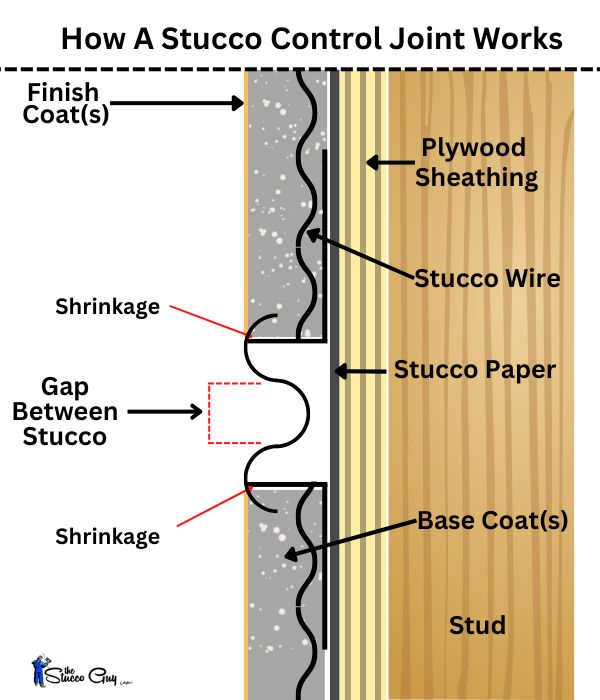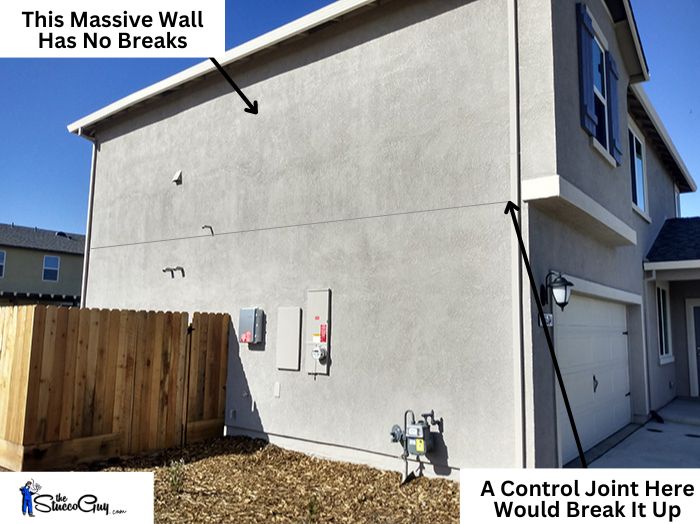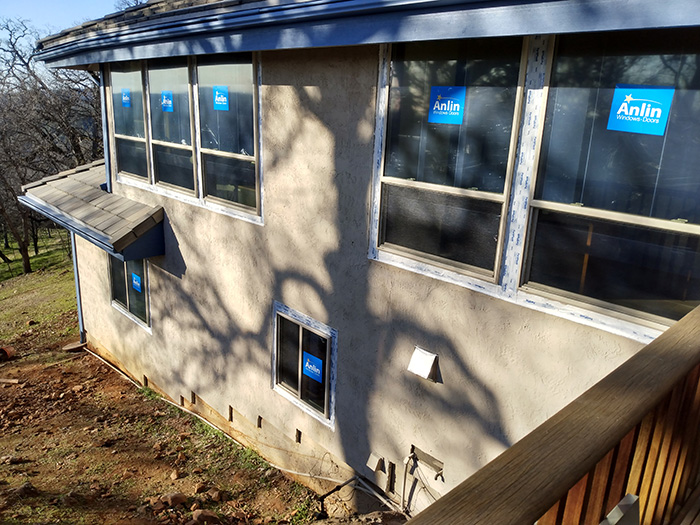Maybe you are familiar with control joints, in regards to stucco walls and you have read up on them a little bit and ask yourself the question, are they necessary? This is not really a yes or no question, as there are a few variables involved that maycontribute to the answer.
Do I Need To Use Control Joints In My Stucco?
In theory, you do not need to use control joints in your stucco walls. You will, however need to use them if your building department requires them or if they are specified in the plans.
If you do not end up using them, keep in mind that you may have a bit more shrinkage cracking on larger walls with minimal to no windows or doors that break up the wall surface area. Keeping the wall well hydrated with water during the curing process will be super important in this type of scenario to try to counter these possible cracks from forming.
If you are super paranoid about these shrinkage cracks from appearing, you could embed a mesh coat on top of the brown coat (base coat) prior to installing the finish coat(s). This, along with super hydrating the walls during the curing process, would prevent a lot of these cracks from forming and give you the best chance possible.
If you do happen to get a few hairline shrinkage cracks, then repairing them is a pretty easy process, so not a huge setback.
What Is The Purpose of Control Joints?
Knowing what these pieces of metal are is an important question that you should be asking, especially if you are considering not using them.
Control joints are used for three main things and these are: to reduce the occurrence of shrinkage cracking from forming during the initial curing phases, to break the wall up if you are going for a specific design or if it is gigantic and to provide a bridge between two dissimilar materials.
Keep in mind that these situations are more of a recommendation to use a C-Joint and doesn't mean that it has to be used.

Examples Of When You Would Need To Use Expansion Joints
There are a couple of situations in which I would recommend using a C-Joint and is really just my personal preference, but I would still recommend doing it for the following reasons.
Breaking Up Large Walls: One situation would be to break up a large wall. I have seen some huge stucco walls that did not have one break in it, besides maybe two or three smaller windows and I think it looks kinda funny.
Something looks out of place and disproportionate, and that's because it is! The image below illustrates a large wall with no windows installed on it, just a couple of access panels, a vent and three pipes. I think that adding a C-Joint in the area that I specified makes the wall look so much better, don't you?

Where Two Dissimilar Materials Meet: Another situation where I think a C-Joint should be used would be where two dissimilar materials meet and you wanted to stucco across the two different substrates. For example, if you had a wood framed house with OSB sheathing and then a courtyard wall that attached to the house that was made out of cinder blocks.
I would strongly recommend installing a vertical C-Joint where the two materials meet. It is very likely that these two materials would separate at some point, making a large crack, not just a small hairline one. Adding this piece of metal would really help to mitigate this problem.
Examples Of When You Would Not Need To Use Expansion Joints
There are also situations where I would not recommend using these joints and that basically boils down to how many breaks are in the wall and if it is a remodel project, were they used on the existing walls?
Walls That Have Natural Breaks: Some walls have a lot of natural breaks in them and these breaks can actually perform the same way that a C-Joint does. These natural breaks are windows, doors, electrical panels and other elements where the stucco will not be applied.

Remodel Projects: If you are doing a remodel and the original stucco did not use any C-Joints anywhere, then I would match that look on the wall or walls that you are remodeling.
We do a lot of stucco removal and reinstallation projects and sometimes we will be working on an older home that did not use any of these joints anywhere in the exterior. Instead of putting new joints on the walls, which will stick out like a sore thumb, we will match the original look of the home and will not include these pieces or metal when reinstalling the stucco.

